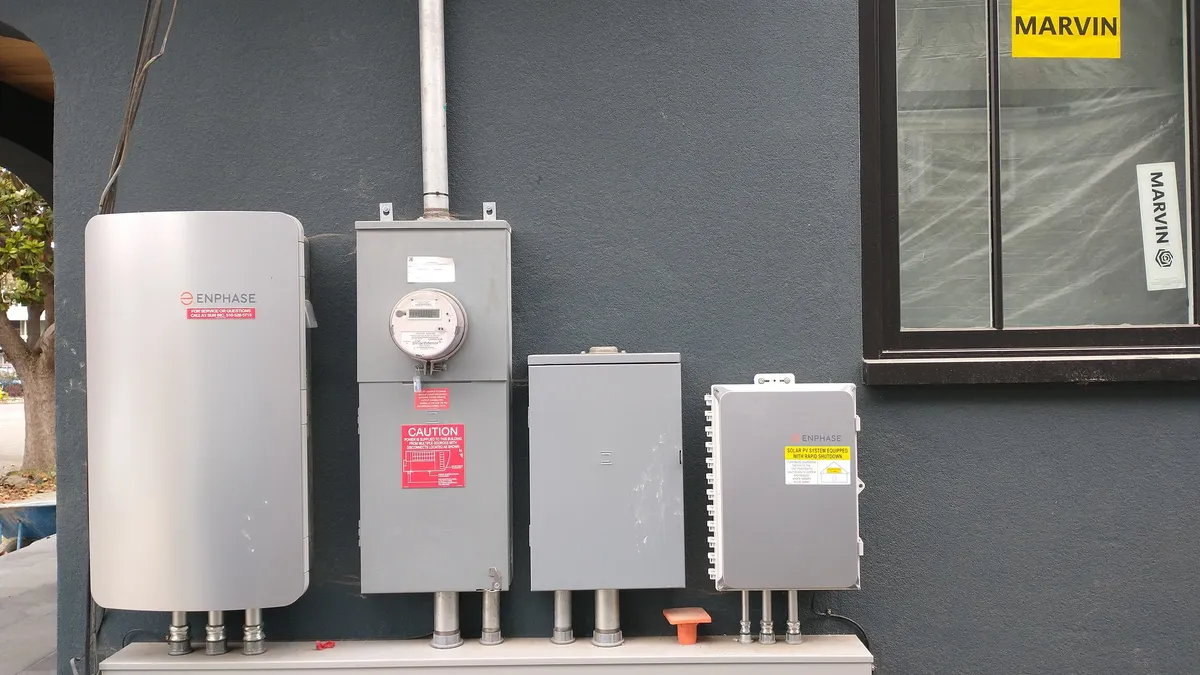The following is a contributed article by Kelly Sarber, CEO of Strategic Management Group.
Energy storage technology may be the singular, most important component in our nation’s transition away from fossil fuels to renewable energy, since utility-scale, battery systems provide the flexibility to absorb, store and deploy energy at locations where and when the power is most needed. Energy storage is crucial to replacing America’s fleet of polluting, fossil fuel plants because they integrate the increasing amounts of wind, solar and hydropower being transmitted hundreds of miles without jeopardizing grid reliability — sometimes the wind isn’t blowing or the sun isn’t shining where and when the power is most needed.
For example, in New York City alone, there are plans to construct more than 9,000 MW of offshore wind projects that will connect to land, replacing more than 8,000 MW of an aging fleet of natural gas plants while adding more electrification capacity for vehicles. These goals cannot be accomplished without deploying utility-scale storage to connect new, intermittent offshore wind power that will take years to develop. More importantly, energy storage projects need to be constructed and operational before these new, planned renewable energy resources come online, making sure intermittent resources are balanced against demand.
Unfortunately, and like every segment of our nation’s economy, the energy storage industry is reeling from unforeseen costs and supply chain delays, facing uncertain, external risks and market-based obstacles that must be acknowledged and addressed if we are to stay on track to aggressively fight climate change by investing and constructing energy storage projects that support dual goals of renewable energy and grid resiliency.
Utility-scale, battery systems operating today are quickly proving themselves to be a reliable and resilient workhorse for grid support in locations where projects have come online. California leads the nation in deploying energy storage because the state’s climate change policies are complemented by market incentives that reward grid resiliency, reliability, resource adequacy, voltage support and energy islanding. In most other states, energy markets do not compensate developers of energy storage with the same benefit-based approach — policies that need to be immediately remedied if they hope to attract similar investment.
Elected leaders, the Independent System Operators and other stakeholders need to recognize the detrimental impacts from escalating costs and move quickly to replicate market-based incentives that reward energy storage with similar financial incentives. It is ironic that billions of dollars in stand-by fees flow into keeping polluting natural gas plants online while the one asset base that is desperately needed by the grid for resiliency and reliability --- energy storage --- is stymied. The risk of not acting today could slow down our nation’s clean energy transition by decades.
A recent Wood Mackenzie national report quantifies delays or cancellations for over 2 gigawatts of grid-scale capacity originally slated to come online in the 4th quarter are now largely attributed to supply chain pressures, increased capital expenditures, and interconnection-related delays forecasted to persist at least through 2024 and possibly 2025. Because utility-scale energy storage projects can take several years to construct, the timing gap means many projects that were in development during Covid are caught in a tightening noose with no relief, leading to projects that once were profitable now being in the red with no recourse.
Without corresponding increases on the revenue side through both market changes and federal/state incentives, energy storage projects will get more expensive for ratepayers in the future while current projects may have to cancel, losing years of development time invested in progressing this transition to clean energy resources. It is akin to throwing a bucket of cold water on private capital interested in addressing climate change goals in states where corresponding market-based support incentives aren’t being adopted.
The days of cheap capital are over and that means that returns will have to be higher for energy storage to compensate for the heightened risks of increasing interest rates, supply chain disruptions and competition from EV companies tying up lithium-ion in the long term. This translates into winners and losers in the race to build carbon-free ecosystems.
Unsurprisingly, strong federal and state climate goals backed by consistent, market-based incentives attract significant private investment as demonstrated by the solar and wind industries’ evolution over the last decade. The Investment Tax Credit and Production Tax Credit from 2009 are the financial reasons why the solar and wind industries created cost parity with fossil fuel since these incentives led to a manufacturing and construction boom that provided economies of scale, allowing cost curves to decrease faster than rising demand.
Today and due to bipartisan bickering, these same federal incentives do not exist for stand-alone, energy storage, but hopefully will make it through any bill that is being advanced. This fact plus supply chain issues from rising demand have driven up the costs of commodities like lithium-ion over 600% in the last several months. While this is great for escalating the commercializing of long-duration storage as investors pivot to non-lithium technologies, the medium-term effects are dampening what has been a robust development climate for commercially financeable energy storage systems.
If the ITC and PTC extensions were to pass in Congress this month, that would help these projects, but ultimately grid operators need to recognize, appreciate, and quantify the benefits and role energy storage plays in creating resiliency in the face of an increasingly unreliable grid that instead continues to reward natural gas plants built decades ago.
A greater sense of urgency is needed to support markets for energy storage, a proven technology that provides the transformational pathway to wean ourselves off fossil fuels. Our industry works hard to build a cleaner grid with fewer emissions while demonstrating how to increase grid reliability using intermittent renewable energy generation paired with energy storage systems. As a developer with a robust pipeline of energy storage projects in California, Arizona and New York, I remain hopeful that with the right incentives and collaboration, we can meet the existential challenges that currently threaten our industry’s growth.






















